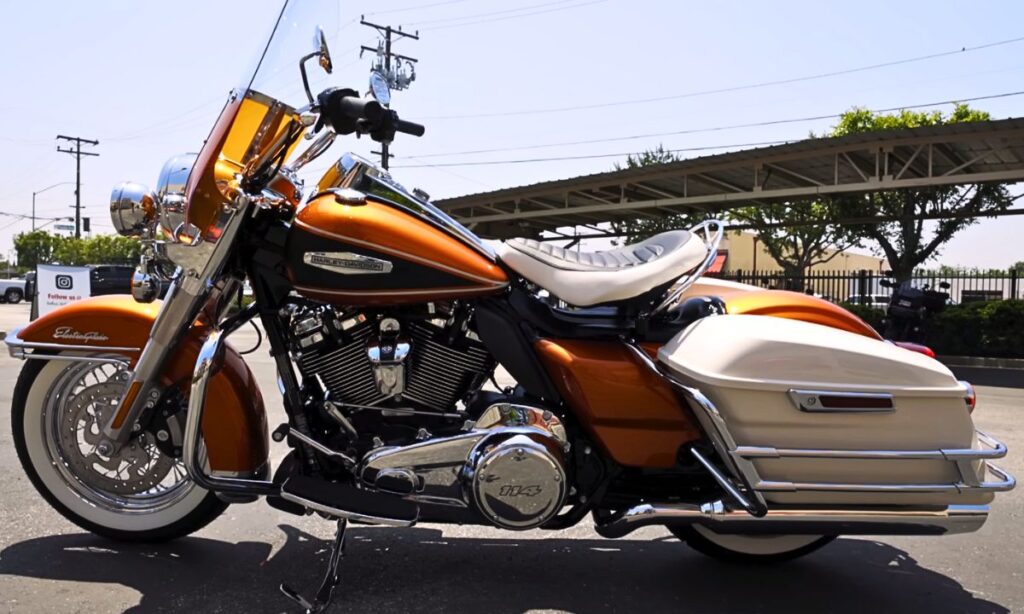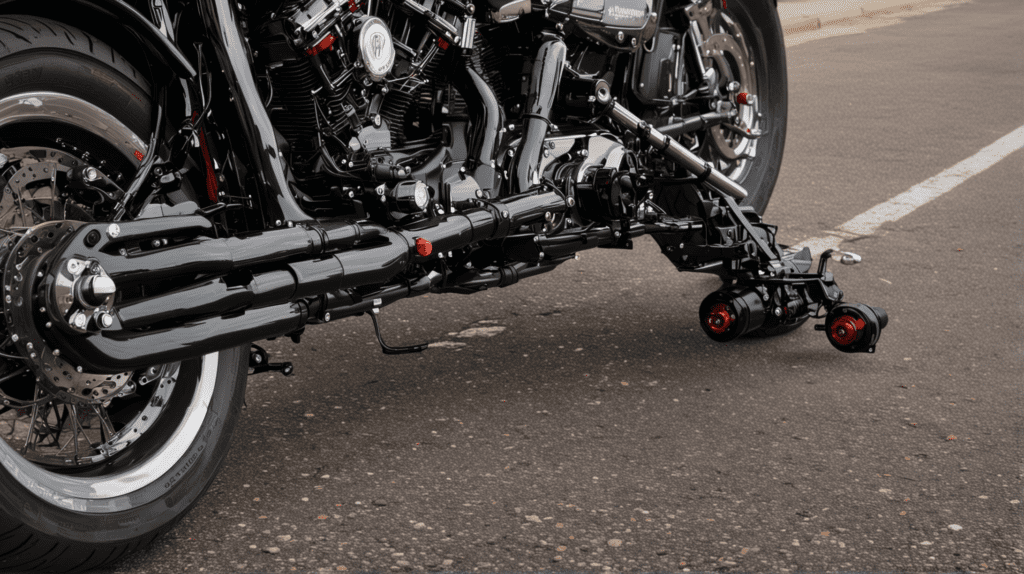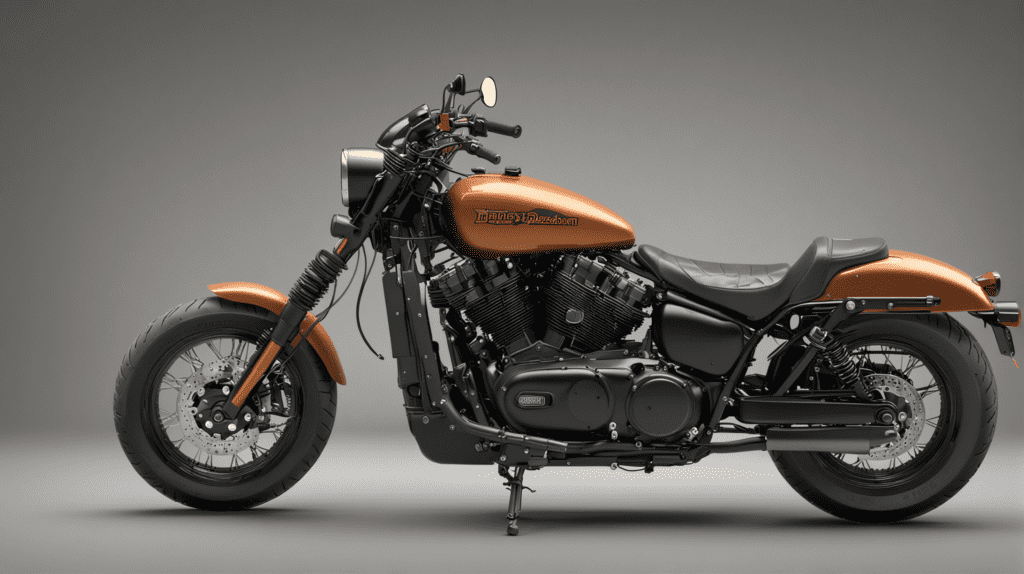I still remember the day when my trusted old Harley began to stutter and sputter under me.
I was cruising through the mountains, the engine humming under me. Suddenly, to my despair, I felt my beloved machine start to falter.
The engine was losing power, and I could feel the rhythm being interrupted.
It didn’t take long for me to realize I was dealing with one of the most common issues among us Harley enthusiasts: fuel pump problems.
In this article, we will dive into this common problem that has been faced by Harley owners over time.
Harley Fuel Pump Problems
Harley-Davidson motorcycles, renowned for their design and performance, can occasionally encounter fuel pump problems.
These issues can potentially impact the bike’s performance, leading to a decrease in fuel efficiency, power, or even complete engine stalling.
Common symptoms of a faulty fuel pump can include difficulty in starting, irregular engine performance, and unexpected shutdowns while running.

Common Signs of Bad Harley Fuel Pump
A failing fuel pump can lead to a variety of issues, impacting the performance and safety of the bike.
These symptoms include but are not limited to difficulty starting the bike, a sudden decrease in fuel efficiency, irregular engine performance, and the bike stalling or failing to run smoothly.
Identifying these signs early can help prevent further damage and maintain the overall health and longevity of your Harley Davidson motorcycle.
1. Reduced Fuel Efficiency
The fuel pump is responsible for delivering the correct amount of fuel from the tank to the engine.
When it starts to malfunction, it often sends more fuel than necessary, leading to higher fuel consumption.
Several signs can point towards this issue. A sudden increase in the frequency of refills, despite no significant change in the riding pattern, is a common indication.
You may also notice a decrease in overall mileage, meaning the bike covers fewer miles per gallon than it usually does.
To diagnose this issue, monitor your motorcycle’s fuel consumption over a period of time.
You can do this by keeping track of the miles ridden and the amount of fuel used.
If you notice a significant drop in fuel efficiency, it’s time to inspect the fuel pump.
Continuous over-consumption of fuel can lead to other serious issues, such as excessive wear on the engine or damage to the spark plugs due to an overly rich fuel mixture.
In order to fix a malfunctioning fuel pump includes inspecting the fuel lines for leaks, checking the fuel filter for clogs, and examining the fuel pump itself.
If the fuel pump is indeed the culprit, it will likely need to be replaced to solve the problem.
2. Reduced Performance
One of the most prevalent signs of a bad fuel pump is reduced performance. Your motorcycle might not accelerate as quickly as it used to, or it may struggle to reach its top speed.
This is often due to the fuel pump not delivering the appropriate amount of fuel to the engine, causing it to underperform.
To identify this issue, pay close attention to the performance of your motorcycle, especially during acceleration.
If you notice a significant drop in power or a sluggish response compared to the usual performance, it may be time to check your fuel pump.
Here’s a simple guide on how to do it:
- Check for any physical damages or leaks on the fuel pump. Also, look for any signs of wear and tear.
- Do a fuel test, as this test will help you determine if the pump is delivering the right amount of fuel to the engine.
- You’ll need a fuel pressure gauge for this. First, locate the fuel pressure port and connect the gauge to it. Start the engine and note the readings on the gauge.
- If the pressure is below the optimal range indicated in your Harley’s manual, it’s a clear sign of a bad fuel pump.
- If you’re unable to pinpoint the issue or are uncomfortable performing these tests yourself, it’s recommended to take your Harley to a certified mechanic for a comprehensive check-up.
Take note that if the fuel pump is indeed the culprit, it’s best to replace it immediately to avoid further damage to your motorcycle’s engine.
3. Sputtering On Acceleration
One of the most clear signs of a bad fuel pump is sputtering or missing during acceleration.
When your motorcycle is running smoothly at a steady speed but starts to sputter when you twist the throttle to accelerate.
It’s often a sign that the fuel pump is struggling to deliver the necessary volume of fuel to the engine.
The primary function of a fuel pump is to deliver fuel from the tank to the engine at the correct pressure.
When the pump is failing, it can’t maintain the needed pressure, causing the engine to misfire or sputter during acceleration.
- To diagnose, note if the sputtering occurs only when accelerating or if it also happens at idle or constant speeds. If it’s only during acceleration, the fuel pump is likely the culprit.
- Physically inspect the fuel pump if possible. Look for signs of damage or wear. If the pump appears damaged or worn out, it’s likely time for a replacement.
- Conduct a fuel pressure test. A failing pump may not be able to maintain pressure, particularly when greater fuel flow is demanded during acceleration.
- If the pressure drops when you open the throttle, it’s a strong indication of a bad fuel pump.
4. Difficulty In Starting
This problem can occur if the fuel pump is unable to supply enough fuel to the engine for combustion.
When the ignition is turned on, if the engine cranks but does not start or takes longer than usual to start, it could be an indication of a failing fuel pump.
This situation demands immediate attention. To diagnose, start by checking the fuse and relay of the pump.
A blown fuse or a faulty relay can hinder the operation of the pump. If these are in good condition, proceed to test the fuel pressure.
A fuel pressure gauge can be connected to the fuel system to verify if the pump is producing the required pressure.
If the pressure is below specifications, it confirms a malfunctioning fuel pump.
Replacement of the fuel pump should be done by a professional mechanic or someone with technical know-how.
The replacement process involves draining the fuel tank, detaching the fuel lines, and removing the old pump.
Then, the new pump will be installed, ensuring all connections are secure.
5. Surging At Idle
This condition is characterized by the bike’s engine revving up and down or ‘surging’ while in idle mode.
This troubling behaviour is typically caused by an inconsistent flow of fuel to the engine, often a result of a clogged or failing fuel pump.
When dealing with this issue, you must consider cleaning or replacing the fuel filter, as a clogged filter can restrict fuel flow.
If the problem persists, it may be necessary to check the fuel pump itself.
For this, you’ll need a fuel pressure gauge to verify if the pump is delivering the correct pressure.
If the fuel pressure readings are lower than the manufacturer’s specifications, it’s a strong indication of a problematic fuel pump.
In that case, consider replacing the fuel pump with a new one and make sure the replacement pump should be compatible with your motorcycle model.
6. Power Loss
Power loss occurs due to the pump’s inability to supply a sufficient amount of fuel to the engine, leading to a decrease in the bike’s overall performance.
You may notice this when your Harley struggles to achieve high speeds or when it starts to jerk or stutter during acceleration.
To diagnose this issue, start by examining the fuel pump’s filter and screen for any clogging or damage.
Then, check the fuel pressure with a gauge while the bike is idle and during revving.
If the pressure is significantly lower than the manufacturer’s recommended range, it’s a clear indication of a failing fuel pump.
In terms of resolving this issue, cleaning or replacing the fuel filter may help if it’s clogged.
7. Rough Idle
Rough idle is often indicated by an irregular pattern in your motorcycle’s idle speed, where the engine rhythmically surges and falls.
It happens when the malfunctioning fuel pump can’t maintain a steady stream of fuel to the engine, affecting its performance.
The first step to diagnosing this problem is to notice the irregular idle speed, especially when the engine is running at low RPMs.
If the problem gets worse during hard acceleration or at full throttle, it could suggest an issue with the fuel pump.
You should also check for any misfires which can be caused by irregular fuel supply.
Misfires often result in jolting or jerking motions when your Harley is idling or running.
8. Random Stalling
This unpredictable issue can occur when the motorcycle is idling, running at low speeds, or even at high speeds.
The root cause is often insufficient fuel supply to the engine, which is a direct consequence of a malfunctioning fuel pump.
Here’s a detailed guide on how to diagnose and address this issue:
- Firstly, notice when and how the stalling occurs. If it’s frequent and unpredictable, it could be a sign of a bad fuel pump.
- If your Harley is consistently stalling, inspect the fuel pump. You may need to remove the gas tank to do this. Look for any physical damage or wear. If it’s visibly damaged, you’ll need to replace it.
- A healthy fuel pump should produce a light hum or whirring sound when the ignition is turned on. If there’s no sound or if it’s unusually loud or high-pitched, there’s likely a problem.
- Using a fuel pressure gauge, check if the fuel pump is producing the correct pressure. Refer to your Harley’s specific model for the correct fuel pressure values. If the reading is low, your fuel pump might be failing.
- If you’re not comfortable performing these steps yourself, take your Harley to a professional mechanic. They can accurately diagnose and fix the problem.
How Do You Replace The Fuel Pump on Harley motorcycles?
As an integral part of your Harley’s performance, the fuel pump supplies gasoline from the tank to the engine, and if it becomes faulty, replacing it is crucial to maintain your bike’s performance.
Here’s a step-by-step guide on how to replace it:
- Ensure the motorcycle is in a stable position. Use a motorcycle stand if available.
- Use a siphon to carefully drain the fuel into a safe container for storage or disposal.
- Unscrew and carefully unclip any necessary elements to remove the fuel tank. Remember to disconnect any hoses or wires.
- The pump is located inside the tank. Open the access hatch on the top of the tank and carefully take out the fuel pump.
- Install your new fuel pump and secure it in place. Ensure all seals are correctly positioned to prevent leaks.
- Attach the tank back onto the bike, connecting any hoses or wires you disconnected previously.
- Refill the tank with the gasoline you drained earlier.
- Start your bike and let it idle for a few minutes to ensure the new pump is working correctly.
Remember: always work in a well-ventilated area and have a fire extinguisher nearby, given the flammable nature of gasoline.

Tonmoy, the brains behind the influential motorcycle-focused website, TwoWheller.com, is a dedicated and passionate advocate for biking culture. Born and raised in a family of motorcycle enthusiasts, his love for two-wheeled transportation was ignited at an early age. His commitment to providing in-depth reviews and helpful tips for riders has established him as a respected figure in the motorcycle community.

